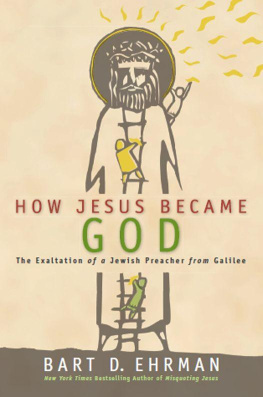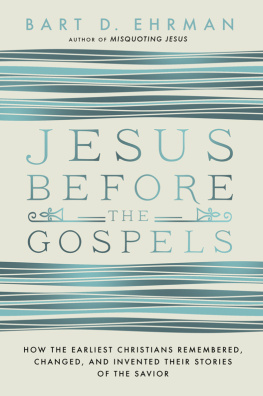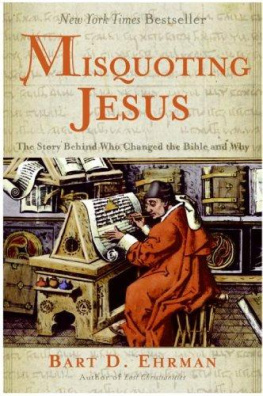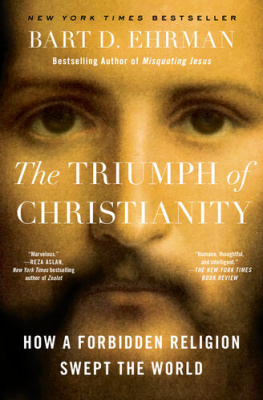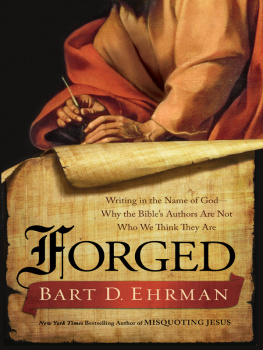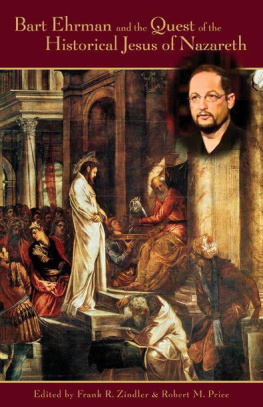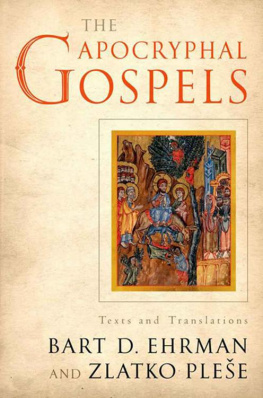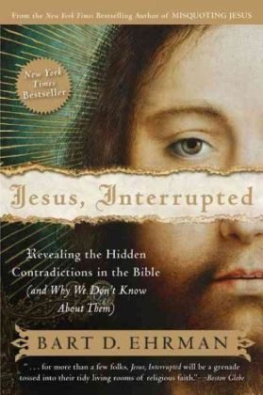Introduction: Recouping Our Losses
It may be difficult to imagine a religious phenomenon more diverse than modern-day Christianity. There are Roman Catholic missionaries in developing countries who devote themselves to voluntary poverty for the sake of others, and evangelical televangelists who run twelve-step programs to ensure financial success. There are New England Presbyterians and Appalachian snake handlers. There are Greek Orthodox priests committed to the liturgical service of God, replete with set prayers, incantations, and incense, and fundamentalist preachers who view high-church liturgy as a demonic invention. There are liberal Methodist political activists intent on transforming society, and Pentecostals who think that society will soon come to a crashing halt with the return of Jesus. And there are the followers of David Koreshstill todaywho think the world has already started to end, beginning with the events at Waco, a fulfillment of prophecies from Revelation. Many of these Christian groups, of course, refuse to consider other such groups Christian.
All this diversity of belief and practice, and the intolerance that occasionally results, makes it difficult to know whether we should think of Christianity as one thing or lots of things, whether we should speak of Christianity or Christianities.
What could be more diverse than this variegated phenomenon, Christianity in the modern world? In fact, there may be an answer: Christianity in the ancient world. As historians have come to realize, during the first three Christian centuries, the practices and beliefs found among people who called themselves Christian were so varied that the differences between Roman Catholics, Primitive Baptists, and Seventh-Day Adventists pale by comparison.
Most of these ancient forms of Christianity are unknown to people in the world today, since they eventually came to be reformed or stamped out. As a result, the sacred texts that some ancient Christians used to support their religious perspectives came to be proscribed, destroyed, or forgottenin one way or another lost. Many of these texts claimed to be written by Jesus' closest followers. Opponents of these texts claimed they had been forged.
This book is about these texts and the lost forms of Christianity they tried to authorize.
The Varieties of Ancient Christianity
The wide diversity of early Christianity may be seen above all in the theological beliefs embraced by people who understood themselves to be followers of Jesus. In the second and third centuries there were, of course, Christians who believed in one God. But there were others who insisted that there were two. Some said there were thirty. Others claimed there were 365.
In the second and third centuries there were Christians who believed that God had created the world. But others believed that this world had been created by a subordinate, ignorant divinity. (Why else would the world be filled with such misery and hardship?) Yet other Christians thought it was worse than that, that this world was a cosmic mistake created by a malevolent divinity as a place of imprisonment, to trap humans and subject them to pain and suffering.
In the second and third centuries there were Christians who believed that the Jewish Scripture (the Christian "Old Testament") was inspired by the one true God. Others believed it was inspired by the God of the Jews, who was not the one true God. Others believed it was inspired by an evil deity. Others believed it was not inspired.
In the second and third centuries there were Christians who believed that Jesus was both divine and human, God and man. There were other Christians who argued that he was completely divine and not human at all. (For them, divinity and humanity were incommensurate entities: God can no more be a man than a man can be a rock.) There were others who insisted that Jesus was a full flesh-and-blood human, adopted by God to be his son but not himself divine. There were yet other Christians who claimed that Jesus Christ was two things: a full flesh-and-blood human, Jesus, and a fully divine being, Christ, who had temporarily inhabited Jesus' body during his ministry and left him prior to his death, inspiring his teachings and miracles but avoiding the suffering in its aftermath.
In the second and third centuries there were Christians who believed that Jesus' death brought about the salvation of the world. There were other Christians who thought that Jesus' death had nothing to do with the salvation of the world. There were yet other Christians who said that Jesus never died.
How could some of these views even be considered Christian? Or to put the question differently, how could people who considered themselves Christian hold such views? Why did they not consult their Scriptures to see that there were not 365 gods, or that the true God had created the world, or that Jesus had died? Why didn't they just read the New Testament?
It is because there was no New Testament. To be sure, the books that were eventually collected into the New Testament had been written by the second century. But they had not yet been gathered into a widely recognized and authoritative canon of Scripture. And there were other books written as well, with equally impressive pedigreesother Gospels, Acts, Epistles, and Apocalypses claiming to be written by the earthly apostles of Jesus.
The Lost Scriptures
The Gospels that came to be included in the New Testament were all written anonymously; only at a later time were they called by the names of their reputed authors, Matthew, Mark, Luke, and John. But at about the time these names were being associated with the Gospels, other Gospel books were becoming available, sacred texts that were read and revered by different Christian groups throughout the world: a Gospel, for example, claiming to be written by Jesus' closest disciple, Simon Peter; another by his apostle Philip; a Gospel allegedly written by Jesus' female disciple Mary Magdalene; another by his own twin brother, Didymus Judas Thomas.
Someone decided that four of these early Gospels, and no others, should be accepted as part of the canonthe collection of sacred books of Scripture. But how did they make their decisions? When? How can we be sure they were right? And whatever happened to the other books?
When the New Testament was finally gathered together, it included Acts, an account of the activities of the disciples after Jesus' death. But there were other Acts written in the early years of the church: the Acts of Peter and of John, the Acts of Paul, the Acts of Paul's female companion Thecla, and others. Why were these not included as parts of Scripture?
Our New Testament today contains a number of epistles, that is, letters written by Christian leaders to other Christians, thirteen of them allegedly by Paul. Scholars debate whether Paul actually wrote all of these letters. And there are other letters not in the New Testament that also claim to be written by Paul, for example, several letters sent by "Paul" to the Roman philosopher Seneca, and a letter written to the church of Laodicea, and Paul's Third Corinthians (the New Testament has First and Second Corinthians). Moreover, there were letters written in the names of other apostles as well, including one allegedly written by Simon Peter to Jesus' brother James, and another by Paul's companion Barnabas. Why were these excluded?
The New Testament concludes with an apocalypse, a revelation concerning the end of the world in a cataclysmic act of God, written by someone named John and brought into the New Testament only after Christian leaders became convinced that the author was none other than John the son of Zebedee, Jesus' own disciple (even though the author never claims to be that John). But why were other apocalypses not admitted into the canon, such as the apocalypse allegedly written by Simon Peter, in which he is given a guided tour of heaven and hell to see the glorious ecstasies of the saints and, described in yet more graphic detail, the horrendous torments of the damned? Or the book popular among Christian readers of the second century, the



